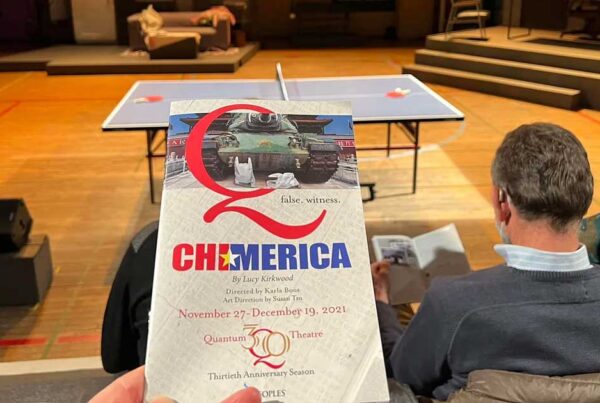
Pittsburgh Quarterly – Since the emergence of drama two-and-a-half-millennia ago, the theater’s greatest enemy has always been the plague. It is no coincidence that during the fifth century BCE, as Aeschylus, Sophocles, and Euripides were writing the first great tragedies, Hippocrates was writing the first great medical treatise, called the Epidemics.Theater, unlike virtually any other art form, requires an audience comprising multiple individuals, while the definition of plague is “a widespread affliction.” To perform a play people must be gathered together, and in order to spread, a plague requires the same kind of human congregation.
William Shakespeare was born in a plague year, 1564, and fortunately, baby Will survived, while two of his siblings did not. His productions, and his theaters, would be shut down quite routinely during plague outbreaks for the rest of his life.
The agon of theater and plague is ancient, warlike, and constant to this very day. After 2,500 years, with all the advances in science, technology, and medicine, nothing has really changed. We are still publishing treatises titled with the same ancient Greek expression, “epidemic,” and our theaters are still shut down whenever plagues appear.
So it is ironic that the first live play performed in Pittsburgh since the inception of the current world-wide epidemic is an agonistic work from Quantum Theatre called, “The Current War,” focused on the issues of science and technology, and adopting the motif of boxing as its defining trope.
The book, music, and lyrics of this compelling work are all by Pittsburgh native Michael Mitnick and, if the title seems familiar, he was also the screenwriter of the 2017 film by the same name. However, the project started years before as a musical during Mitnick’s time at drama school, and you can sense in the organic dialogue, nuanced lyrics, and contemporaneous musical style the deep research he has done to achieve its historic authenticity.
Ostensibly the story of the struggle for dominance over the electrical industry in Gilded Age America between celebrated inventor Thomas Edison and Pittsburgh upstart George Westinghouse, “The Current War” is less about technology and more about morality. Mitnick’s brilliance lies in how he does not bore us with the mere scientific record of the two competing systems — Edison’s direct current (DC) vs. Westinghouse’s alternating current (AC) — but rather how he explores the obscure but scandalous and harrowing depths the former inventor resorted to as he tried to discredit the latter. And the production achieves this without pandering to sensationalist depictions of the many animal, and ultimately human, experiments that resulted in the death of its subjects…




